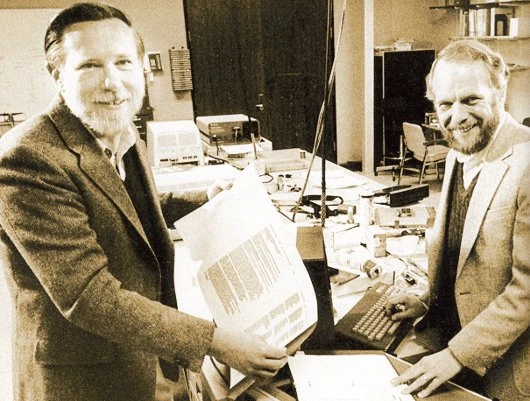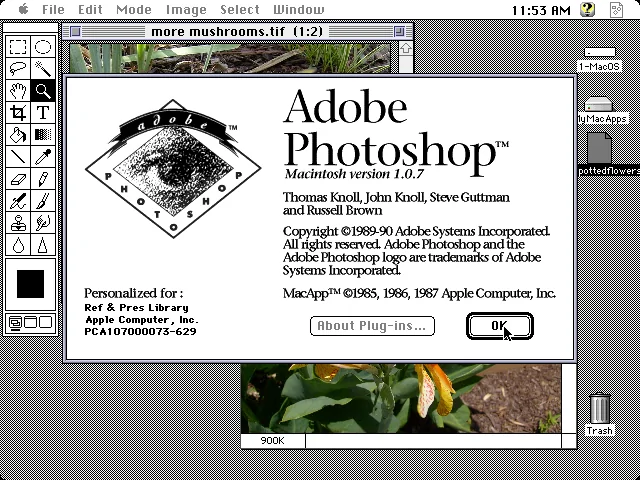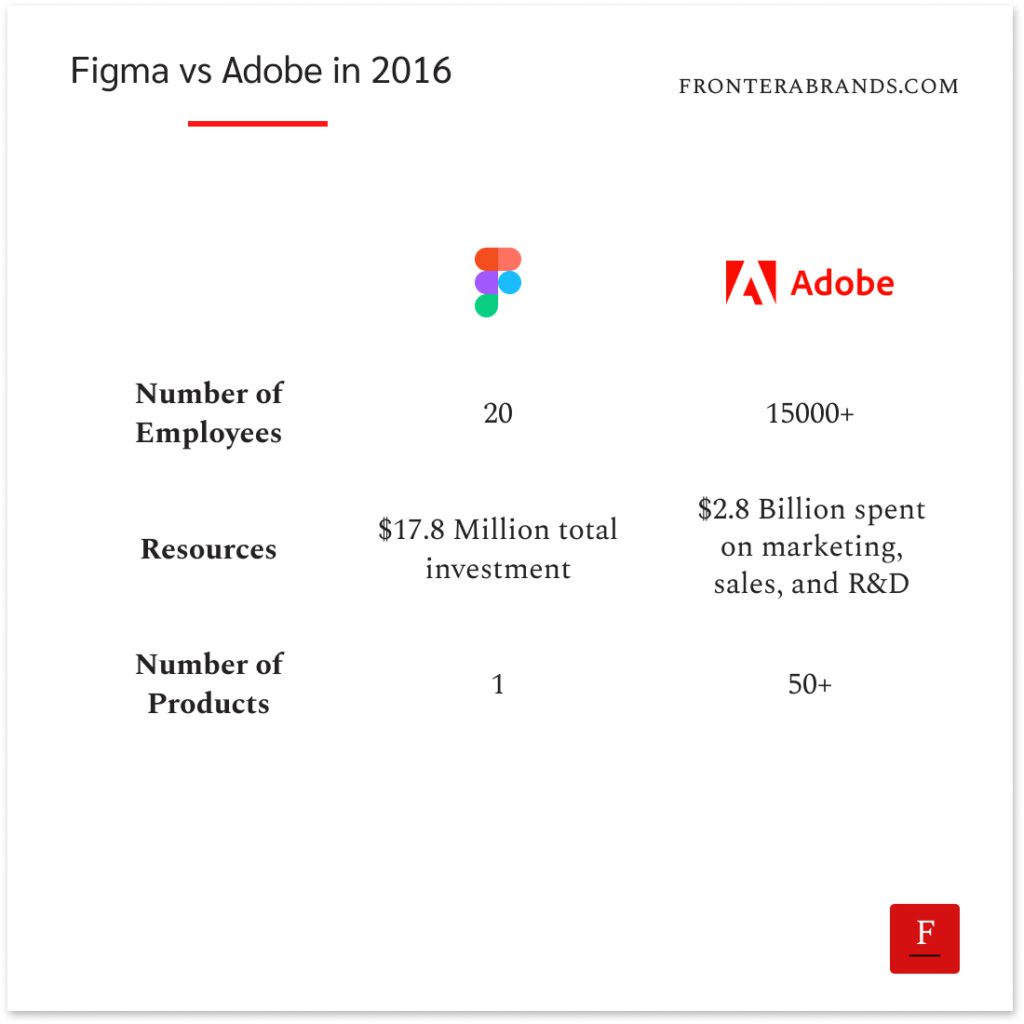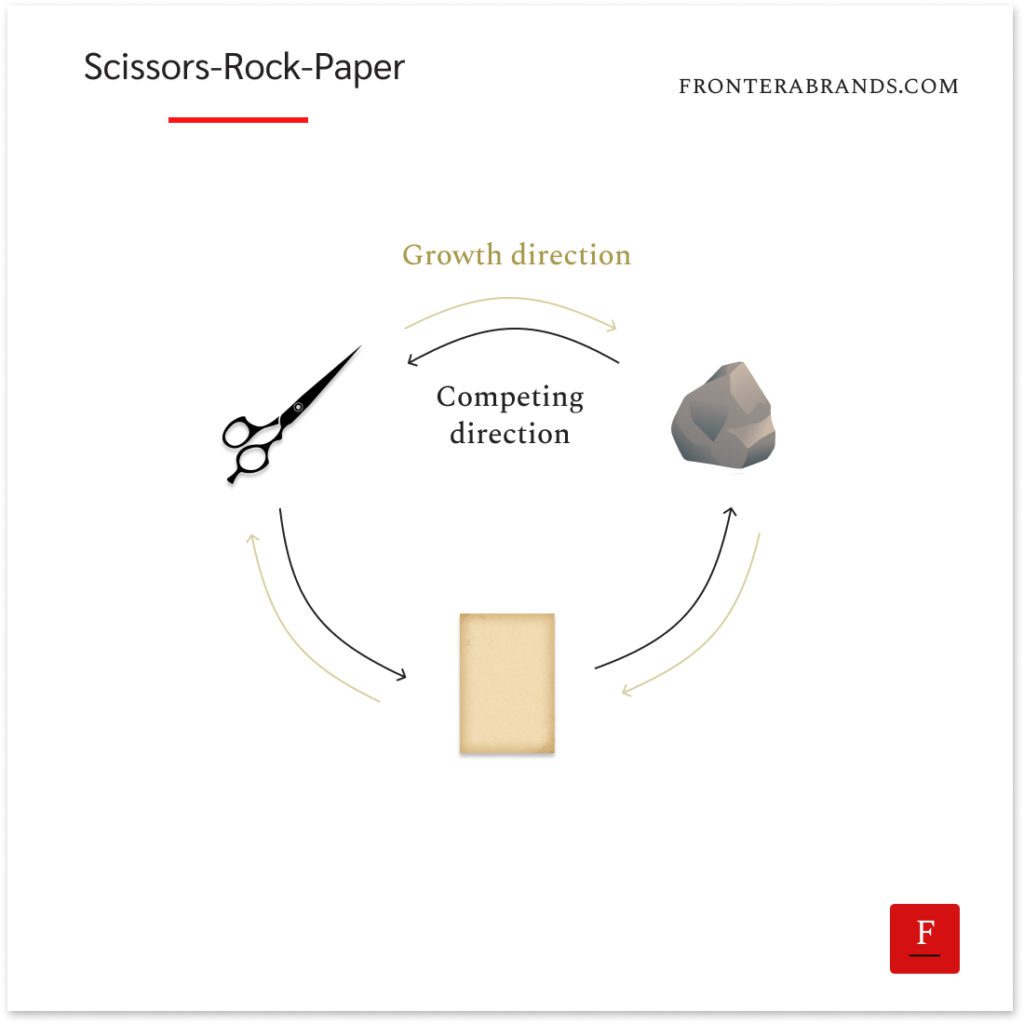In 1982, two employees at Xerox —John Warnock and Charles Geschke— decided to quit and start their own business.
They were excited about developments in tech.
So they wanted to ride the wave.
Their idea was simple.
As more people used computers, the world needed better ways to work with digital files.
So they created a programming language to print digital files with a consistent quality regardless of the device.
They called the language PostScript, and their company Adobe.
You know who was one of their first customers?
Steve Jobs’ Apple Computer.
Jobs saw the value of PostScript right away.
He didn’t only become a customer, but also invested in the company.
PostScript quickly became the norm in digital publishing.
And it turned Adobe into a fast-growth startup.

Warnock and Geschke took the company public in 1986.
As the obvious next product, Adobe created software to allow vector-based design.
They called it Illustrator.
So they were not only helping people print high-quality text and images anymore but also designing them.
The company kept growing fast.
They used the capital from the IPO to acquire other companies, make new products, and invent new stuff to organize the digital world — like PDF.

Fast forward to 2016.
The company started with two founders quitting a corporation now become a corporation itself.
Adobe had 15,000 employees, $5.85 billion in revenue, and 50+ products.
Here comes the funny part.
The same year, two college dropouts —Dylan Field and Evan Wallace— created a new design tool.
Their idea was also simple.
They saw that other interface design tools —including Adobe’s XD— were hard to use and not collaborative enough.
So they created a simple tool that worked in web browsers and made teamwork much easier.
They called it Figma.

They were competing against a behemoth with unlimited resources like Adobe, but that didn’t matter.
You didn’t need to download and install anything like Adobe products.
And you could share the mock-ups with anybody with one click.
So designers loved it.
Its simplicity quickly made it the most popular interface design software.
After 6 years of competition, Adobe management admitted their defeat by Figma in 2022.
And they made the largest deal in their history to acquire Figma for $20 billion.
From Scissors to Rock, from Rock to Paper
Now, the deal was later blocked by the US and EU antitrust authorities.
But that’s not the point.
The story of Adobe and its defeat by Figma shows us a business cycle:
Adobe succeeded by focusing on a specific problem as a small company.
It became a medium-sized business thanks to that focus.
And their new products and acquisitions have turned them into a giant.
But becoming a giant brought problems too.
Adobe became slow, risk-averse, and lost its focus with too many products.
This made them vulnerable against startups like Figma and Canva.
Marty Neumeier uses the game Rock-Paper-Scissors as a metaphor to explain this cycle:
- Scissors: Every young/small company must focus — like a sharp pair of scissors. This helps them get market share from big but unfocused papers.
- Rock: As scissors do well, they become medium-sized companies. They add new products, and sub-brands, and make acquisitions. They don’t fully lose their focus yet — so they can crush scissors with their momentum.
- Paper: Rocks’ momentum helps them become even bigger. They have more product lines/brands, and internal bureaucracy. So now, they are unfocused giants. They can cover rocks with their resources and by creating competing product lines. But they lose to hyper-focused scissors. And every paper eventually becomes irrelevant, so they have to reinvent themselves with a new focus.
So companies grow in one direction but compete the other way:

Understanding this cycle is important.
Because it helps you turn your size from a weakness into an advantage.
How?
Two important points to take advantage of the scissors-paper-rock cycle:
1. Don’t imitate how others play
Here’s a quote from Jack Trout I often refer to:
“Doing things like your bigger competitors is how to get killed in the business wars.”
The scissors-rock-paper cycle proves this.
Many young companies look at how big companies do things and try to copy them.
They make similar products.
They try to solve different problems for different customers at once.
And they worry too much about taking risks.
You know what happens?
They fail to become sharp scissors.
So they struggle.
Each stage in the cycle brings its strengths and weaknesses.
And a young/small brand’s main strength is focus.
Persistent focus on solving one problem better than everybody else.
So if your business is at this stage, ignore what bigger competitors do.
You probably don’t need new products or services.
You have to find the “one” that will bring you success.
When Adobe went public, they only had one product.
When Figma’s founders agreed to sell it for $20 billion, it was still a simple design tool.
So the recipe for success for a young brand is clear:
One problem.
One customer segment.
One value proposition.
Becoming a sharp pair of scissors is the only way to beat papers with unlimited resources.
2. Reposition the brand at each stage
Neumeier says the Scissors-Rock-Paper stages are stable times for a business.
Things go well once they reach these stages.
But the hard part is transitions.
For a new business, it’s hard to find the right thing to focus on and become scissors.
For a growing scissors business, it’s hard to add new products without losing too much focus or confusing customers.
Because all these changes mean the brand must change too.
What’s the right path for expansion?
How will we define ourselves after adding new products and services?
And how will we explain the change to existing and new customers?
All businesses struggle with these transitions.
Some fail to add new products that use the company’s strengths — like Hooters.
Some add too many products and dilute the brand.
Business graveyards are full of such examples.
To handle these changes well, first know your company’s strengths.
Every new thing you add should make existing competitive advantages even more powerful — remember the flywheel effect.
Also, every new product line you add means you have new competition.
So you have to assess the new market to see if you have a good chance to win.
Here’s another quote I use often —this time from Sun Tzu— that sums up what’s needed to reposition your brand for each transition:
”Victorious warriors win first and then go to war, while defeated warriors go to war first and then seek to win.”
–
Enjoyed this article?
Then you’ll love the How Brands Win Newsletter.
Get the “5 Mental Models to Differentiate Your Business” guide when you join. It’s free.
